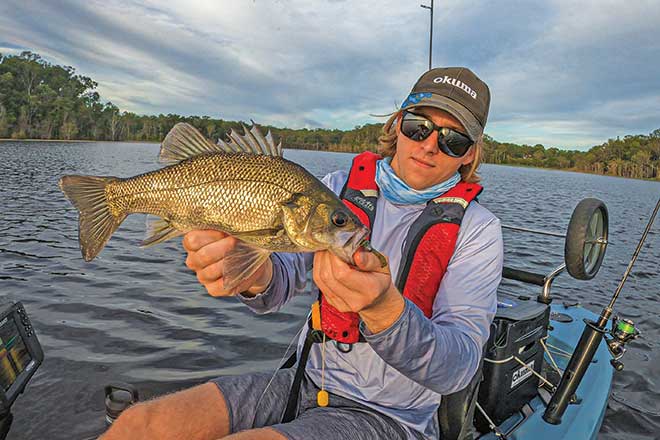With cooler weather comes an influx of bait into many of our river and estuary systems, bringing with it a winter run of species, such as big bream and tailor, as well as attracting larger models of some species into the shallows, including snapper and flathead.
The cooler months are a favourite time of mine for flicking soft plastics, so I thought I’d share a few tips and techniques for winter plastics fishing.
Plastic selection
Throughout winter, the westerly wind often calms the water, allowing the sediment to settle and the system to clear.
This often sees me packing my fluoro favourites Electric Chicken and Sexy Mullet away, my usual go-to soft plastic colours when the summer rain and wind make the water murky.
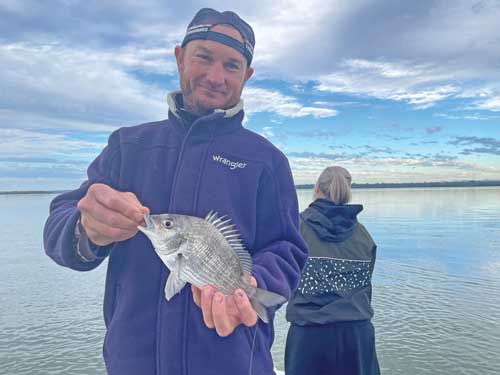
I still run my favourite ultraviolet colours, Midnight Oil and Blood Oil, however I also pull out the clearer and more natural colours that excel in winter, such as Bad Shad, Opening Night and Houdini.
The clearer water also allows increased visibility for predatory species and that, combined with the influx of smaller baitfish into my local systems, will often see me downsize my presentation.
In the murky water, it’s often about brighter colours, larger profiles and more aggressive actions, however finesse presentations can often up your catch rates in winter.
This is the season I love fishing the shallows and a few of my go-to presentations include the Z-Man 2.5” PrawnZ and 2.5” Slim SwimZ, along with Z-Man’s range of Micro Finesse BaitZ, with the 1.75” Shad FryZ in Smelt colour a favourite, rigged on a 1/8oz size 2 TT HeadlockZ Finesse jig head.
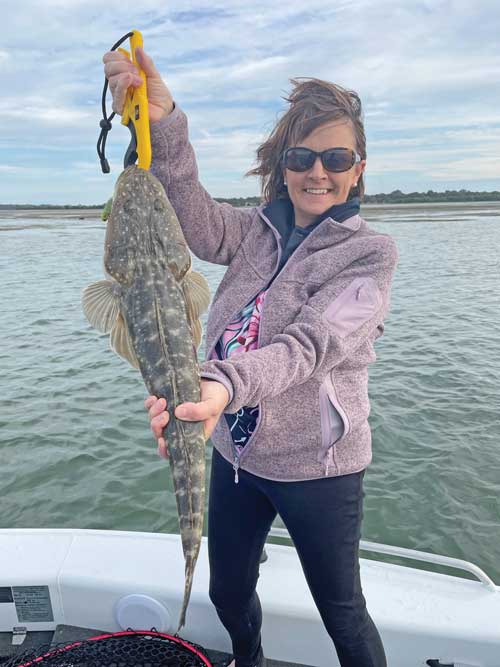
Retrieves
For me, it’s almost two extremes when it comes to retrieves through the cooler months.
In clearer water, when the tides are smaller, I will often slow the retrieve down, keep it very natural and ensure there’s plenty of Pro-Cure Super Gel Scent added.
The plastic then looks real, feels real and tastes and smells real to maximise the chances of triggering strikes.
Scent is a key when you are slowing things down and Pro-Cure Super Gel is a favourite because it stays on well, being a gel-based scent, and it also contains real ground bait as well as the scientific elements.
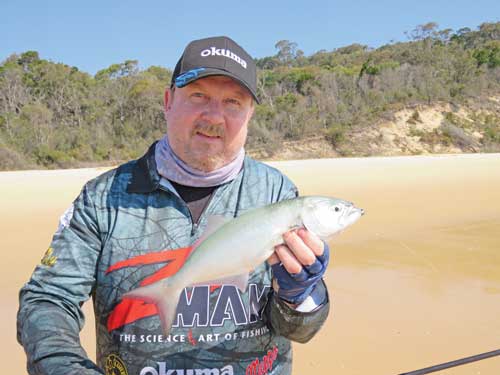
If you’re still not getting bites on these days with minimal tidal flow, try slowing things down further and fishing the Ned Rig System, utilising a TT NedlockZ mushroom-style jig head and a naturally buoyant Z-Man plastic for a rapid stand-up presentation that can be dragged and twitched on the bottom.
When the tides are larger, there’s more flow and the fish and bait are moving quicker as they transition through different areas with the tide.
In this situation, I will often speed up the retrieve and fish more aggressively because the fish are on the move and spend less time deciding whether to eat a lure presentation.
A quicker and more aggressive hop, a burn (fast wind) and kill (pause), or a shake and wind retrieve can all fire up the bite.
The key as always is to mix up the retrieve until you find what works – a slower retrieve may get the bream or flathead to bite, while a more aggressive retrieve may fire up tailor or snapper.
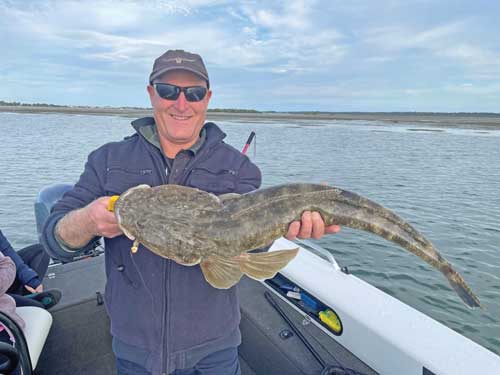
Shallows
The influx of smaller bait will often flood into the shallows to escape predatory fish, which makes winter a great time for shallow-water fishing.
I catch many of my largest flathead and bream throughout the cooler months and it’s often in less than 0.5m of water.
There are a few keys to success when fishing this shallow.
Keeping an eye out for bait is one.
Bait movement on the surface often signals a predatory fish harassing them and a quick cast to the area will often result in an instant hook up.
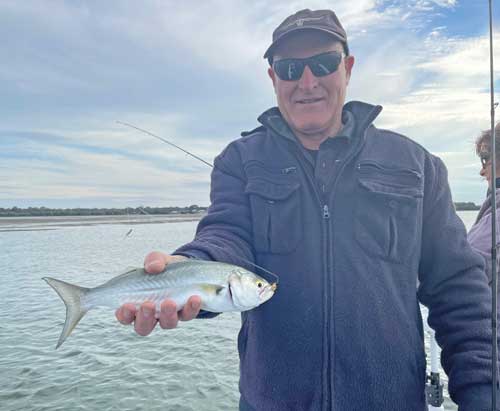
Likewise, if you see a bow wave of bait pushing across a flat, if often has a predator tracking it and pushing it along.
I recently cast to one of these bow waves in 30cm of water and was instantly connected to a mid-60cm flathead that shot across the flat.
One secret I will share with you is that jig head weight has nothing to do with water depth at times when hunting the flats.
I will often fish a 1/8-1/4oz jig head in 0.5m of water and the reason is twofold.
It’s about A, getting a long cast away from the boat in the clear and shallow water and B, keeping the lure in the water when I have the rod tip up and fishing a rapid wind and shake retrieve with an occasional pause, much like you would when working topwater lures.
However, I find that the plastic appeals to more species, I can also pause it and hop the bottom if I find an area holding more grunter or flathead.
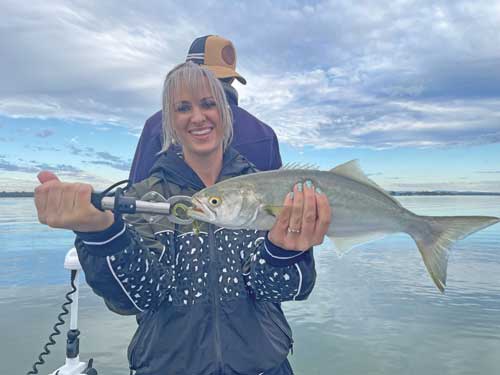
Land-based
All this talk of shallow water should be getting the land-based anglers excited as the bait and larger predatory species push into shallow water.
I find myself pushing the boat, kayak or stand-up paddle board into super shallow water, while land-based anglers are worried about finding deep water.
Don’t forget to check your local expanses of sand, weed and mud flats.
The prime times to target these areas are wading the last few hours of the run-in tide and the first hour of the run-out.
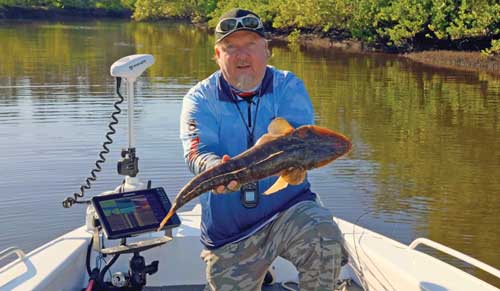
Fish will often push onto the flats with the tide, so they will be on there earlier in the tide cycle, while on the run-out, they will often exit the flats sooner.
This can make the run-in tide more productive, however be ready for a feeding period on that first of the run-out, as the fish will make the most of their last opportunity to feed before they move to deeper water.
When wading the flats, it’s important to pay attention to what’s happening around you and think like a fish.
Ask yourself where the fish might be on the flat and why they would be in that area.
Is it bait, structure, changes in depth or access to deeper water that may see fish moving across certain areas of the flat?
Up the creek
During the cooler months, we often encounter sustained periods without rain and this opens another zone in our waterways for fishing.
Throughout a lot of areas that I fish, summer rain renders the creeks unfishable for extended periods of time, however the lack of rain throughout the cooler months sees these waterways clearing, bait pushing up and predators following.
It’s worth an explore into the upper reaches of your local creeks when the water is clear.
Keep an eye on the sounder and the edges of the creek for bait activity as sections will likely be barren, while others will potentially be loaded with bait and fish.
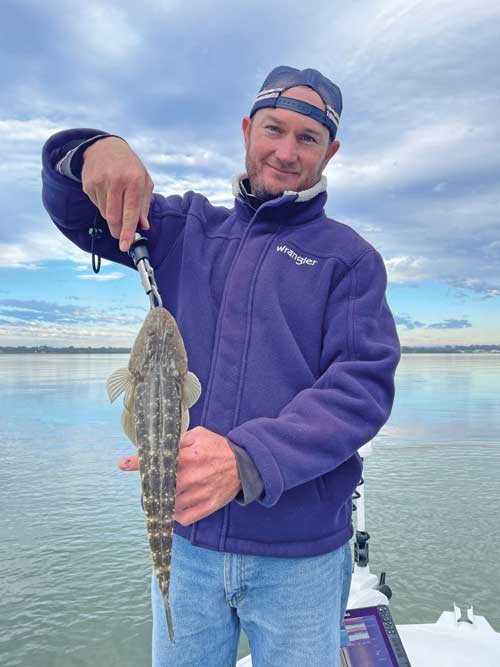
A recent session up a local system saw quiet sections of creek, then around the next bend loads of bait balls were on the sounder and it was a bream a cast action.
The bait in this instance was tiny and the plastic that got the bites was my favourite bite-size baitfish imitation, the Z-Man 2.5” Slim SwimZ.
It’s incredible the variety of species that will travel a long way up the creek following bait.
We have encountered all the bread-and-butter favourites such as bream, grunter, flathead and jewfish, along with tailor, snapper and even cobia on more than one occasion.
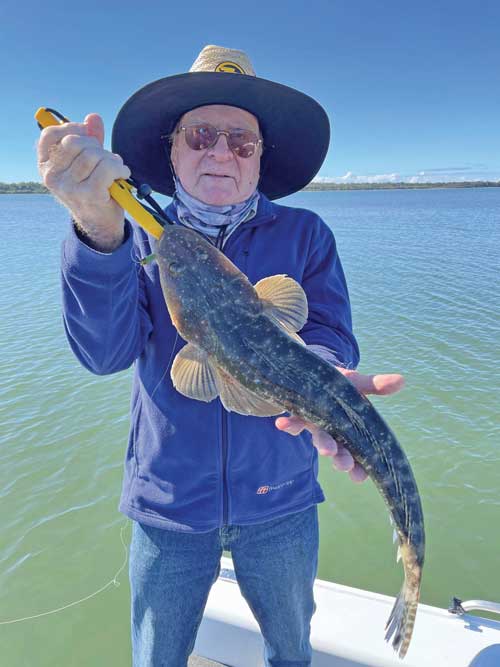
Other opportunities
Don’t forget to consider other seasonal opportunities that arise during the cooler months, with a couple of favourites being beach fishing and targeting deep schooled bass.
Very different scenarios, however soft plastics are a favourite option for me in both fishing scenarios and they are easy to fish – you can fish the entire water column – and they appeal to a wide range of species.
If you want to give the winter deep schooled bass a go, keep an eye on the sounder, locate the school and then fish through them, mixing up the retrieve until you find what switches them on.
Two of my favourite presentations for targeting schooled bass are a Z-Man 2.5” Slim SwimZ on a 1/4oz 1/0 TT DemonZ jig head and the larger 3” Slim SwimZ on a TT RevlockZ (underspin) jig head in 1/4oz, 3/8oz or 1/2oz 3/0.
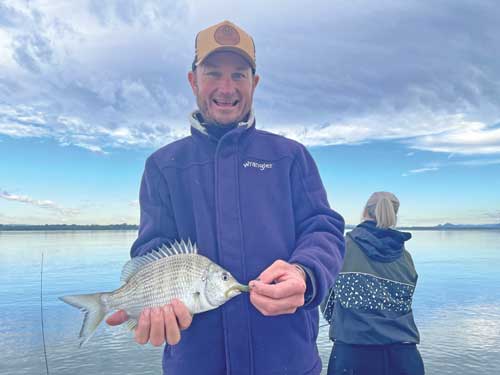
If you’re land-based, try walking the edges of local impoundments, running and gunning until you find a school of fish.
Look for areas where the land signals that it drops into deeper water, while also working either side of any points you come across.
For those visiting the beach over the cooler months, make sure you pack a few Z-Man 3” MinnowZ in natural baitfish colours, such as Pearl Blue Glimmer, Opening Night and Pinfish, along with a few 1/4oz, 3/8oz and 1/2oz 3/0 TT HeadlockZ HD jig heads.
This versatile paddle tail presentation can be fished with a slow roll, burn and kill or hopped on the bottom for a variety of species, including tailor, flathead, trevally, queenfish and more.
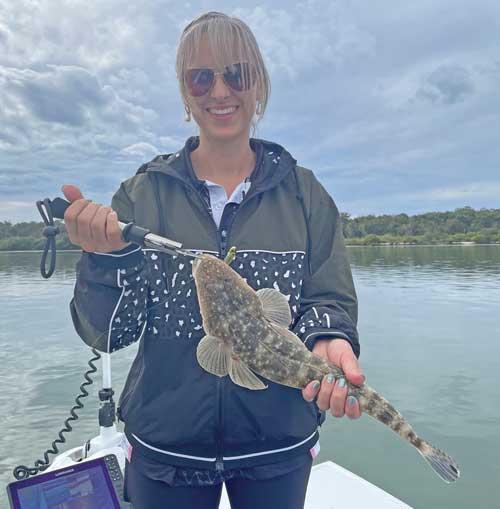
Again, keep an eye out for bait, structure and water movement formed by points, gutters and changes in depth.
Take the time to enjoy these beautiful winter days, explore some new water, mix up the retrieves when fishing those soft plastics and I’m sure you’ll put a bend in the rod.
Hopefully a few of these tips will get you started on your soft plastics journey or help to add a new personal best or species to your catch list.
See you on the water…
 Bush ‘n Beach Fishing Magazine Location reports & tips for fishing, boating, camping, kayaking, 4WDing in Queensland and Northern NSW
Bush ‘n Beach Fishing Magazine Location reports & tips for fishing, boating, camping, kayaking, 4WDing in Queensland and Northern NSW

